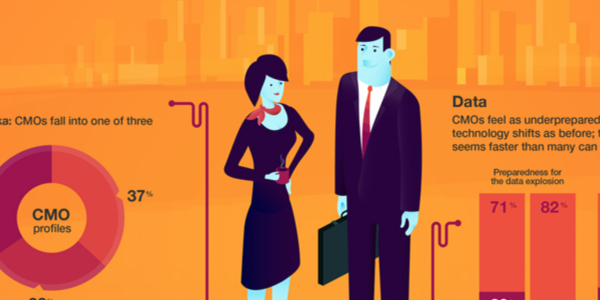Not too long ago, Kevin Bishop entered a bike race that raised money for charity. But the issue is not so much what he did but why he did it.
As the vice-president of customer engagement solutions for IBM Commerce explained, part of the idea was contributing to a good cause. Another factor, however, was to stay fit, and still another was to make some new friends, having moved to the U.S. from the U.K. If you’re marketing to someone like this, understanding those multiple motivations and how they intersect is becoming a big part of your job.
“The CMO’s role is really about helping their companies think through the whole cycle of engagement and working with sales, service and other departments, to get a complete experience,” Bishop recently told Marketing. “It’s enriching that arc of engagement.”
This was only one of the conclusions from from IBM’s 2016 CMO report, based on interviews with more than 700 marketing executives from around the world. In fact, 63% of those surveyed said they were creating bigger investments to improve customer experiences, though the mystery may be in what those investments should be. While 75% of leading CMOs are using more event and experiential marketing (which may be where they’re most comfortable), 67 % are assessing their strategic direction in the light of technological changes.
“As individuals, we as consumers or business people are using mobiles to have access to what we want because our providers are using cloud technologies to deliver it to us,” Bishop explained. “That changes the world of data and integration for CIOs, but it also changes world of CMO because it makes them think about what is valuable to my customer.”
This leads many marketing leaders to pursue what IBM calls “creative destruction,” where organizations build more open and collaborative models of working to achieve their goals. Bishop said this could mean moving from brick-and-mortar to online sales or the way a health-care provider allows patients to make appointments.
Bishop said one of IBM’s customers, a U.K.-based home improvement retailer called HomeBase, was a good case study in creative destruction. As its next generation of customers comes of age, for instance, HomeBase was noticing that they weren’t traditional do-it-yourselfers. Even if they liked the idea of a better kitchen or living room, “They have not grown up where they worked with their hands,” he said.
“(HomeBase) has had to shift their proposition from being a one-stop shop for collecting everything to work on a project to helping you understand how to do the project — what can you do with your own skills, or introduce you to other skills.”
This has also influenced store assortment, where materials for a particular project are packaged together to refit a shower head or other DIY tasks, he added.
Bishop said CMOs will not be able to pursue creative destruction without better data, which is probably why 60% of its survey respondents said they were preparing to bring in more insights through analytics. They also won’t be working alone: while 79 %of CMOs plan to hire employees with digital skills, 74% said they are also planning to either partner with other enterprises to tap into their digital expertise or work with consulting firms.











